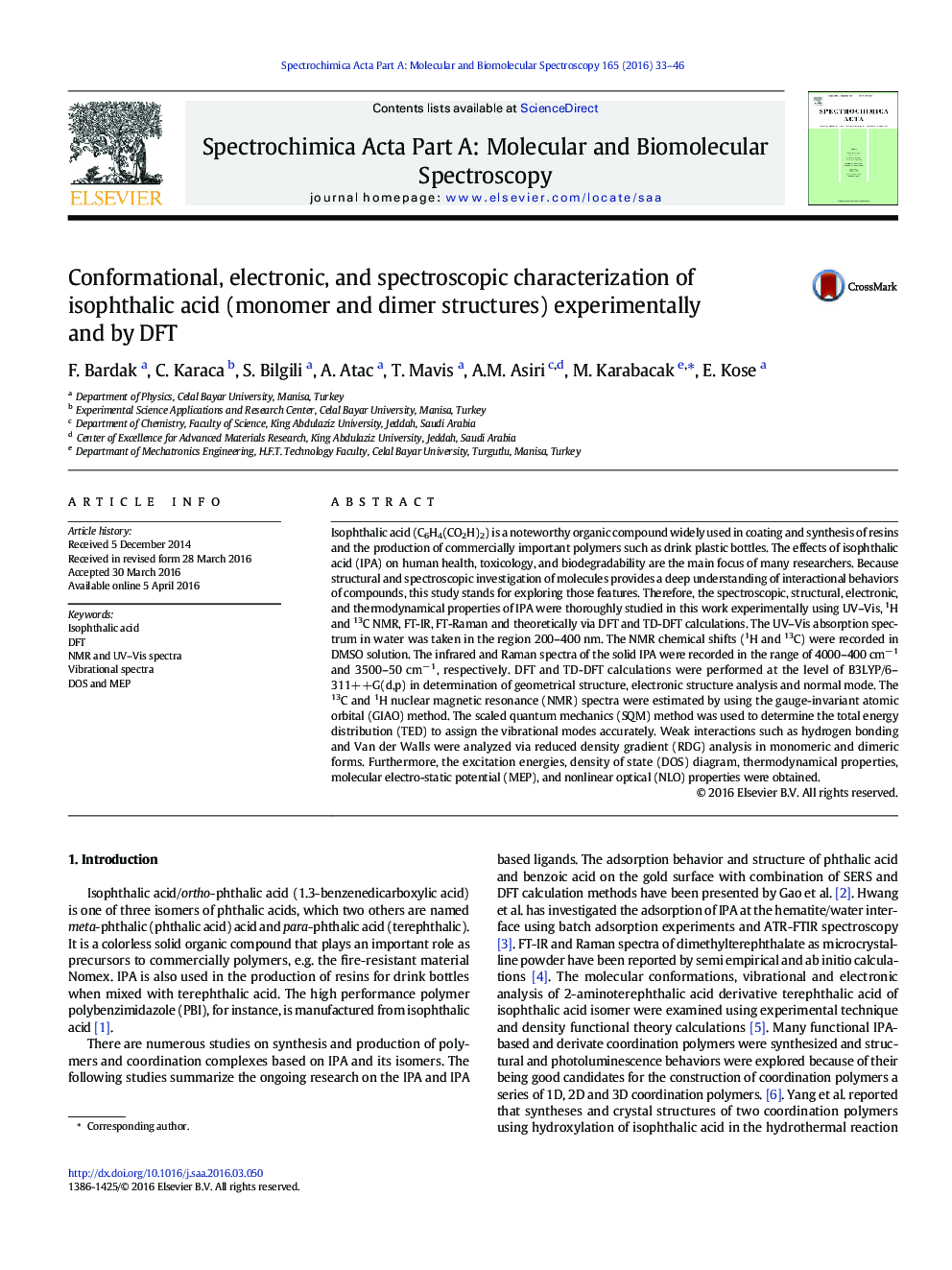| Article ID | Journal | Published Year | Pages | File Type |
|---|---|---|---|---|
| 1228665 | Spectrochimica Acta Part A: Molecular and Biomolecular Spectroscopy | 2016 | 14 Pages |
•Isophthalic acid was characterized by FT-IR, FT-Raman, NMR and UV spectroscopy.•The vibrational frequencies, chemical shifts and electronic absorption wavelengths were calculated by DFT method.•TDOS, PDOS, and OPDOS diagrams for isophthalic acid were analyzed.
Isophthalic acid (C6H4(CO2H)2) is a noteworthy organic compound widely used in coating and synthesis of resins and the production of commercially important polymers such as drink plastic bottles. The effects of isophthalic acid (IPA) on human health, toxicology, and biodegradability are the main focus of many researchers. Because structural and spectroscopic investigation of molecules provides a deep understanding of interactional behaviors of compounds, this study stands for exploring those features. Therefore, the spectroscopic, structural, electronic, and thermodynamical properties of IPA were thoroughly studied in this work experimentally using UV–Vis, 1H and 13C NMR, FT-IR, FT-Raman and theoretically via DFT and TD-DFT calculations. The UV–Vis absorption spectrum in water was taken in the region 200–400 nm. The NMR chemical shifts (1H and 13C) were recorded in DMSO solution. The infrared and Raman spectra of the solid IPA were recorded in the range of 4000–400 cm− 1 and 3500–50 cm− 1, respectively. DFT and TD-DFT calculations were performed at the level of B3LYP/6–311++G(d,p) in determination of geometrical structure, electronic structure analysis and normal mode. The 13C and 1H nuclear magnetic resonance (NMR) spectra were estimated by using the gauge-invariant atomic orbital (GIAO) method. The scaled quantum mechanics (SQM) method was used to determine the total energy distribution (TED) to assign the vibrational modes accurately. Weak interactions such as hydrogen bonding and Van der Walls were analyzed via reduced density gradient (RDG) analysis in monomeric and dimeric forms. Furthermore, the excitation energies, density of state (DOS) diagram, thermodynamical properties, molecular electro-static potential (MEP), and nonlinear optical (NLO) properties were obtained.
Graphical abstractFigure optionsDownload full-size imageDownload as PowerPoint slide
